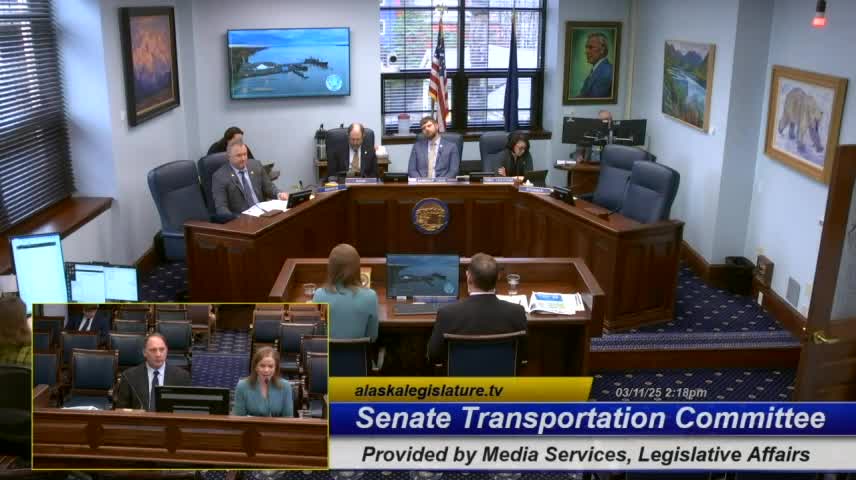Alaska Railroad seeks funding for Port Mackenzie rail extension project
March 11, 2025 | 2025 Legislature Alaska, Alaska
Thanks to Scribe from Workplace AI , all articles about Alaska are free for you to enjoy throughout 2025!

This article was created by AI using a video recording of the meeting. It summarizes the key points discussed, but for full details and context, please refer to the video of the full meeting. Link to Full Meeting
The Alaska Railroad and the Mat-Su Borough are actively seeking ways to advance the project, which is seen as a top priority for local residents and businesses. The extension is expected to improve cargo efficiency for both imports and exports, particularly benefiting the fishing industry and other local enterprises. However, the estimated cost to complete the project now stands between $275 million and $300 million, raising concerns about funding and the need for a substantial anchor tenant to justify the investment.

Before you scroll further...
Get access to the words and decisions of your elected officials for free!
Subscribe for FreeEfforts to secure federal grants are underway, with plans to submit an application to the Federal Railroad Administration for an 80-20 funding program, which would require a local match of approximately $60 million. Discussions are ongoing with potential customers who could provide the necessary freight volume to support the rail line's operation, but securing commitments remains a challenge.
The meeting also addressed the importance of collaboration between the railroad, local businesses, and government entities to create a viable business model that would attract long-term tenants. While there are promising leads, including interest from companies in sustainable fuel production and cement importation, no firm agreements have been established yet.
As the project moves forward, stakeholders emphasize the need for continued outreach and communication to build momentum and ensure that the rail extension aligns with broader economic development goals for Alaska. The completion of this infrastructure is seen as crucial not only for enhancing transportation efficiency but also for fostering economic growth and resilience in the region.
Converted from 03/11/2025 01:30 PM Senate TRANSPORTATION meeting on March 11, 2025
Link to Full Meeting
Comments
View full meeting
This article is based on a recent meeting—watch the full video and explore the complete transcript for deeper insights into the discussion.
View full meeting




